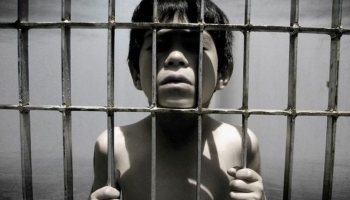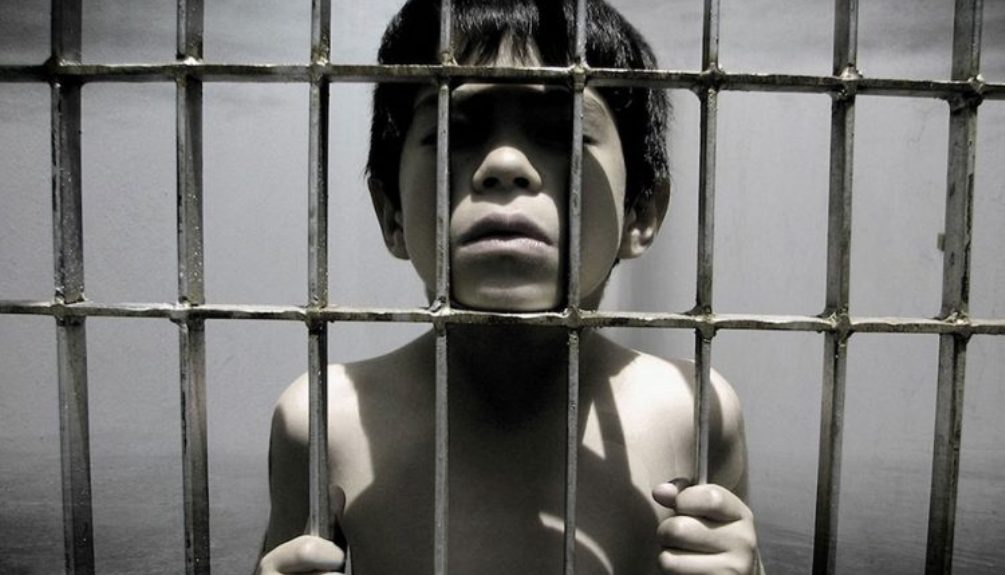
.png) Aarti
Aarti

Remember the father-son duo (Jayaraj and Bennix) whose death in police custody three years ago at Sathakulam in Thoothukudi, Tamil Nadu caught public attention?
Yes, they were picked up by the police on 19 June 2020 for violating COVID-19 lockdown rules because their mobile phone/accessories shop was kept open beyond the permissible timings. Under mysterious circumstances, while Bennix reportedly died at the local Government Hospital on 22 June 2020, his father too breathed his last the next day.
Owing to public uproar, the state government agreed for a CBI probe. The Madurai Bench of the Madras High Court is expected to pronounce the judgment shortly.
On December 31 last, a 17-year-old boy, alleged to be in conflict with law, died within two days after being picked up by the Government Railway Police for allegedly stealing a battery from a railway facility and lodged at a government child care institution (CCI) in Tamil Nadu’s Chengalpattu district. Being the eldest among the six siblings, employed at a toy shop, the Rs 2000 he brought every month greatly supplemented his widowed mother’s income as a watchwoman.
What we know so far is that the juvenile’s mother was informed telephonically by someone in the CCI on December 31 that the boy was unwell. Subsequently she was told to reach the hospital as his condition was serious. Some minutes later, as she was preparing to leave came the sad news that he was no more.
The authorities at CCI attributed her son's death to food poisoning and she got to see her son’s body only after she petitioned the District Collector. On noticing injuries on his face at the mortuary, she suspected foul play. Overcoming various hassles, she ensured that the postmortem was conducted in the presence of a Judicial Magistrate.
Notably, the autopsy report confirmed that the deceased child was subjected to physical attack; there were severe contusions on his legs besides several external injuries on his body and most of it were ante-mortem. Following subsequent investigation, six persons deployed in the said CCI where the juvenile was lodged have since been arrested.
The cause for concern is that the laws meant to protect a child who was in conflict with law, could not save his life. Under the Juvenile Justice (Care and Protection of Children) Model Rules, 2016 any child (below the age of 18) alleged to be in conflict with law who is apprehended by the police is required to be placed under the charge of the Special Juvenile Police Unit or the Child Welfare Police Officer. He/she shall immediately inform the parents or guardian of the child that the child has been apprehended along with the address of the Juvenile Justice Board where the child will be produced and the date and time when the parents or guardian need to be present before the Board.
The Probation Officer concerned has to be intimated so as to enable him obtain information regarding the social background of the child and other material circumstances which are likely to be of assistance to the Board for conducting the inquiry. A Child Welfare Officer or a Case Worker is to accompany the Special Juvenile Police Unit or Child Welfare Police Officer while producing the child before the Board within twenty-four hours of his apprehension.
So, the police officer shall not send the child alleged to be in conflict with the law to a Police lock-up but to an observation home only for such period till he is produced before the Board i.e., within twenty-four hours of his being apprehended and appropriate orders are to be obtained as per rules. The child shall not be hand-cuffed, chained or otherwise fettered or coerced as also no force is to be used on the child.
The observation home is meant to serve as a temporary reception for any juvenile in conflict with law for preliminary inquiries, care and classification thereof according to his age group, such as seven to twelve years, twelve to sixteen years and sixteen to eighteen years, giving due considerations to physical and mental status and degree of the offence committed, for further induction into observation home.
Why do children take up to crimes? No easy answers but economic reasons, family set-up, peer pressure etc., are some of the possible reasons.
To give an idea of the number of children involved in conflict with law, official statistics indicate that totally 1,08,484 juvenile delinquents have been tried under the Juvenile Justice (Care and Protection of Children) Act, 2015 during the period 2016-17 and 2020-21.
This Act, which is the primary legislation for ensuring the safety, security, dignity and well-being of children, is designed to provide for protection of children in need of care and protection and those in conflict with law by catering to their basic needs through care, protection, development, treatment and social re-integration.
But all is not well within the four walls of CCIs and time and again there have been reported instances where juveniles have tried to run away from unlivable environment.
Eight undertrials aged between 15 and 18 who were lodged in a CCI at Bengaluru without being involved in any activity or counselling escaped after breaking open a toilet window. Similarly, two minor girls escaped from a CCI in Uttar Pradesh after scaling the wall of the building.
Not long ago, the juvenile justice committee of the Delhi High Court observed that CCIs should be better ventilated, besides wall colours changed to lighter shades to help remove depression.
In some places, juveniles lodged in CCIs have been reported to getting more aggressive instead of getting reformed because abuse, violence and taking drugs have become the new normal.
A social audit commissioned by the National Commission for Protection of Child Rights (NCPCR) in 2018 as per the directions of the Supreme Court revealed that out of 7,163 CCIs in the country, as many as 2,039 (29 percent) had not registered with the State Governments.
CCIs were not equipped with requisite infrastructure -- for instance, only 85 percent of them were able to provide one bed per child. 88 percent had bathrooms and 82 percent had toilets. Only 52 percent CCIs had adequate number of counsellors and just 26 percent of them had adequate number of child welfare officers, probation officers, case workers etc. Only 45.5 percent of them had a medical officer or physician including the ‘on call’ doctor.
Most importantly backed by an analysis of the social audit carried out for 7,163 CCIs, housing over 2.56 lakh children across states in 2018-19, keeping in view that the number of children placed in some CCIs in ratio to the total population in the institution were in excess in some States which posed a potential risk to the rights and protection of these children including concerns of their safety and security, NCPCR had recommended that children lodged in these institutions are sent back to their families after a thorough review by the Child Welfare Committees.
During the period 2018-20, the number of cases registered under the JJ Act, 2015 including offences by care takers/in charge of Juvenile homes etc., and other offences for crime against children stood at 5718. This calls for proper monitoring and control of CCIs as such abuse within the four walls can undermine the hope that juvenile delinquents can turn around and start a new life in these institutions.
As substantial funds go into the CCIs, there is an imperative need to ensure facilities like continuing education, vocational training, counselling etc., are properly monitored by the authorities.
Juvenile crimes have deeper social causes. The Chengalpattu incident ought to serve as a wakeup call and human rights violations against the children in conflict needs to be dealt with a heavy hand as it can severely damage the psyche of children.